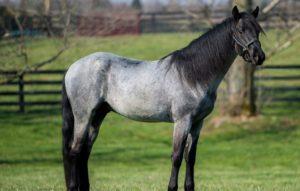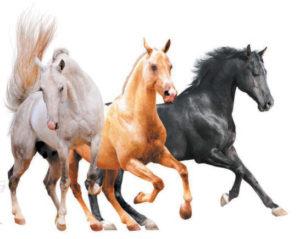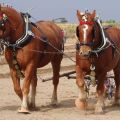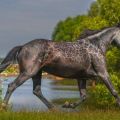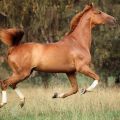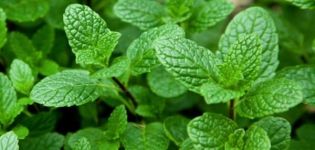Characteristics of the horse breed Soviet heavy draft and the rules of maintenance
Soviet heavy trucks are a Russian horse breed bred in the middle of the last century. The animals are adapted to local conditions, possess significant muscular strength and a calm disposition. Horses can be bred for harness work in agriculture, meat and dairy production. The dry and dense constitution allows the use of horses under saddle.
Origin and use
The Soviet heavy draft is the youngest breed among other heavy draft breeds. The appearance in Russia of their breed of heavyweights was due to objective reasons. On the border of the forest and steppe zones, there has always been a great need for draft power. For the economic needs of the southern regions, a forest was required. Until the 19th century, working horses of the Bityug breed (purebred or crossed with local breeds) were the driving force. At the end of the 19th century, local industrialists and merchants began to import European heavy trucks: Brabancons and Suffolks.
The huge horses were poorly acclimatized in this region and their rude forms were not to the taste of the local population. Crossing of Brabancon stallions with more graceful local mares was allowed. The offspring turned out to be more compact and attractive.
Systematic breeding work to create a new breed was begun in the 1920s and completed in 1952, when it was fully formalized and received the name Soviet heavy truck. Domestic draft horses were bred at the Pochinkovsky and Mordovian stud farms.
The heavy-draft breed was obtained by absorbing crossbreeding of descendants and crosses of Bityugs, Ardens, Percherons with Brabancons and Suffolcs. Currently, stud farms continue to maintain a small livestock of the domestic heavy truck.
Description and characteristics of the Soviet heavy truck
Representatives of the domestic heavy draft breed are inferior to their ancestors in their physical characteristics: the height at the withers does not exceed 160 centimeters, the average weight of stallions is 850 kilograms, mares are about 100 kilograms lighter. But in terms of draft power, Soviet heavy trucks are superior to Brabancons and Suffolks.
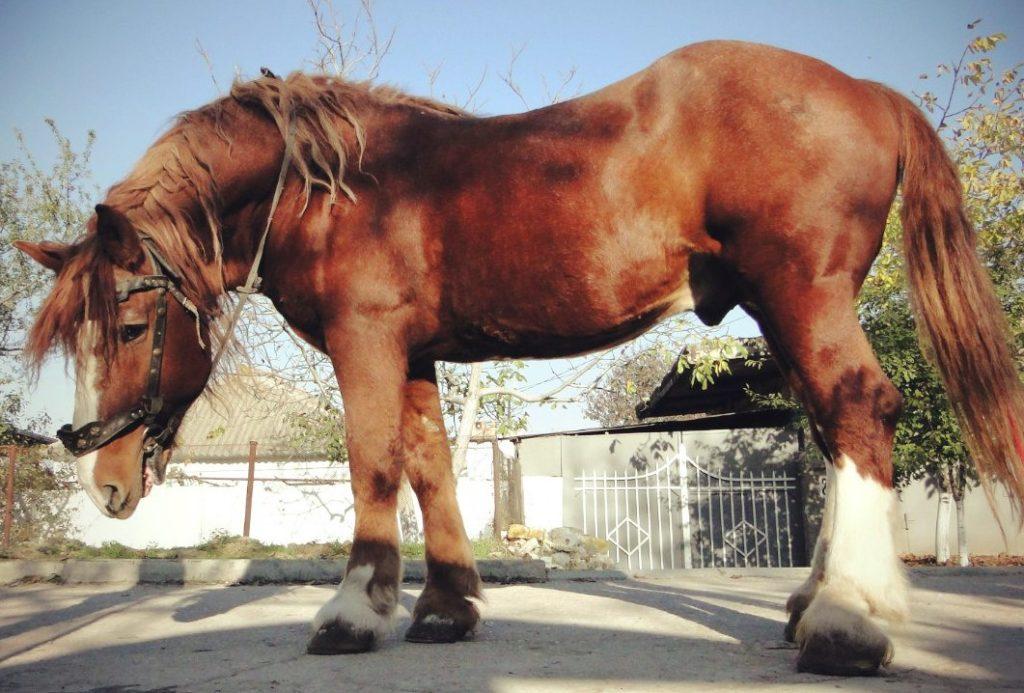
Horse exterior
Distinctive features of Soviet heavyweights:
- The head is of medium size with wide nostrils, developed masticatory muscles, straight / drooping ears.
- Wide neck with well developed muscles, short (medium length).
- Low-set withers.
- Soft back.
- Loin is of medium length.
- Wide, forked croup.
- Muscular ham.
- Wide chest.
- Rounded ribs.
- Often there is a defect in the development of the limbs (clubfoot in the front, saber in the back).
- The pastern is wide.
- Large, well-shaped hooves.
The anatomical structure of the croup and hindquarters indicates the horse's ability to do hard work. Clubfoot and saber-footedness do not affect the working qualities of the horse, but are taken into account only in breeding. Unlike Brabancons, Soviet heavy-duty trucks have a lush tail and lack friezes (hair "stockings" below the knees), which makes it easier to care for horses.
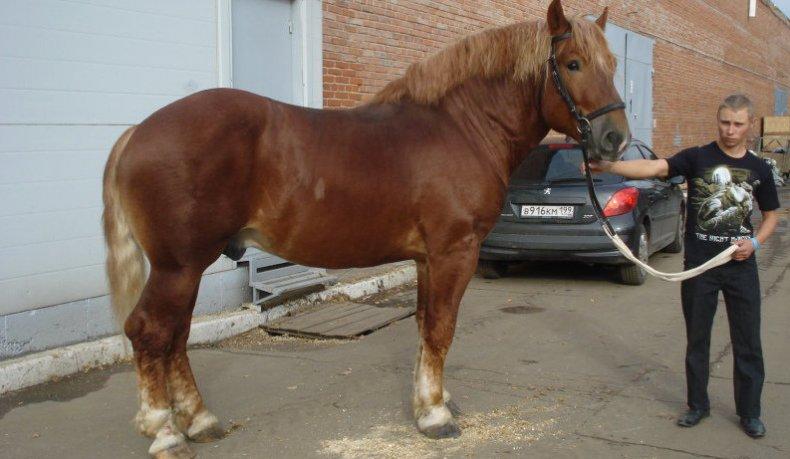
Domestic heavyweights are dominated by red, brown, bay color or in combination with a roan. Black color is rare.
Character
From their French and Belgian ancestors, the heavy draft of the Soviet breed inherited a calm disposition and a benevolent attitude towards people.
Productive qualities of the breed
Soviet heavy trucks gain weight and physical condition by 2-2.5 years. From now on, horses can be used to transport goods. Foals gain weight very quickly: about 300 kilograms in the first six months and almost 200 kilograms in the second half of the year. Horses of the Soviet heavy draft breed are promising as meat and dairy (for the production of kumis). The average milk production of mares for 240 days was 3300 liters or 13 liters per day.
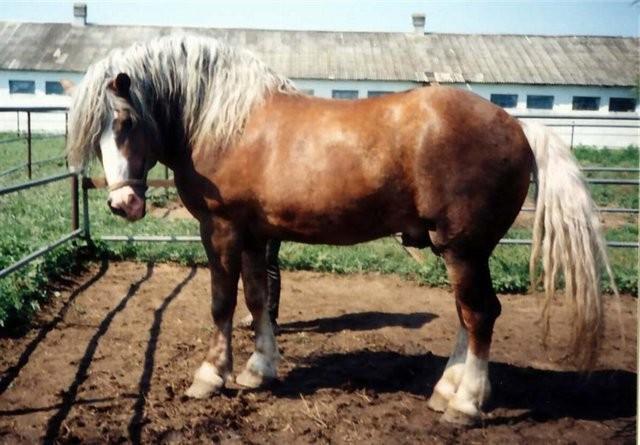
Advantages and disadvantages
Advantages of domestic heavy trucks:
- good draft power;
- unpretentiousness to conditions of detention;
- early maturity.
The disadvantage is susceptibility to degeneration.
Conditions of detention
Soviet heavy trucks are kept in stalls of at least 16 square meters (4x4) per horse, with a window at a height of 1.5 meters. Animals need a daily 3-4-hour walk in the enclosure and communication with relatives. The height of the room is at least 3 meters. Natural or forced ventilation is required, but no drafts. Straw or sawdust is used as bedding, which is changed daily.
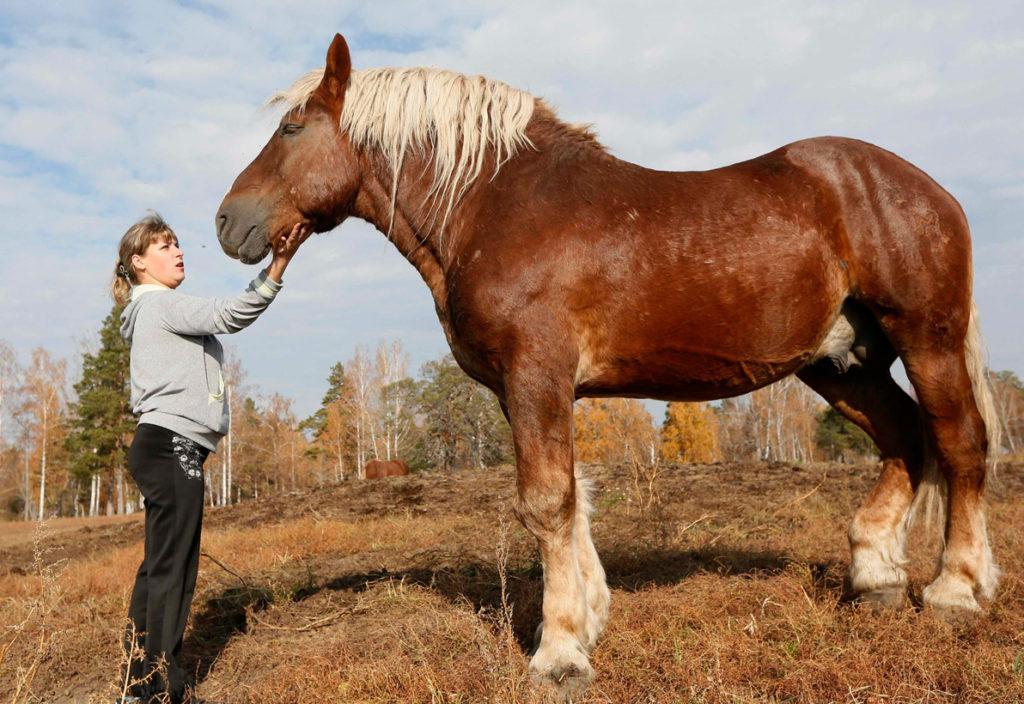
Diet of a heavy truck
Soviet heavy trucks are unpretentious to feed. The diet depends on the age, sex, purpose of the animal. A stallion for breeding during the mating period is given per day (in kilograms):
- concentrated feed - 9;
- hay - 16;
- juicy feed - 6.
Including bran (1.5 kilograms), cake (1 kilogram), legume hay (8 kilograms) must be present. In a non-random period, the diet is reduced by 30%. Foal mares in stalls are given 4 kilograms of concentrates daily (including 1/3 of bran), 20 kilograms of hay (half of which is legumes), 6 kilograms of juicy feed. For lactating mares, the proportion of concentrates is doubled, and the bean hay content is increased to 60%. On pasture content, the amount of concentrated feed is reduced to 3-4 kilograms.
Foals begin to get used to solid food from 3-4 months, when they are still with the queens. The initial diet is 3 kilograms of concentrates. By the time of weaning from milk feeding, add 1 kilogram of bran. On self-feeding up to a year, foals should receive up to 7 kilograms of hay and 4 kilograms of carrots.

From a year to a year and a half, the diet of young horses expands and increases in volume. Oats, cake are introduced into the feed, they are taught to fresh / freshly cut grass. From 2 years of age, working horses should receive in winter (in kilograms):
- hay - 13;
- oats - 4.5;
- bran - 1.5;
- cake - 1;
- carrots - 5.
In the summer (the main diet) - freshly cut grass (30 kilograms). Hay and oats - 5 kilograms each. Bran and cake - 1.5 kilograms each. Apples, fodder beets and watermelons are offered to animals as a delicacy and vitamin supplement.
Animals need salt. For permanent access to it, it is recommended to put a lick briquette in the stall. Water is fed into the stall through a drinking bowl or in a bucket before feeding. It is forbidden to give a drink to hot horses.
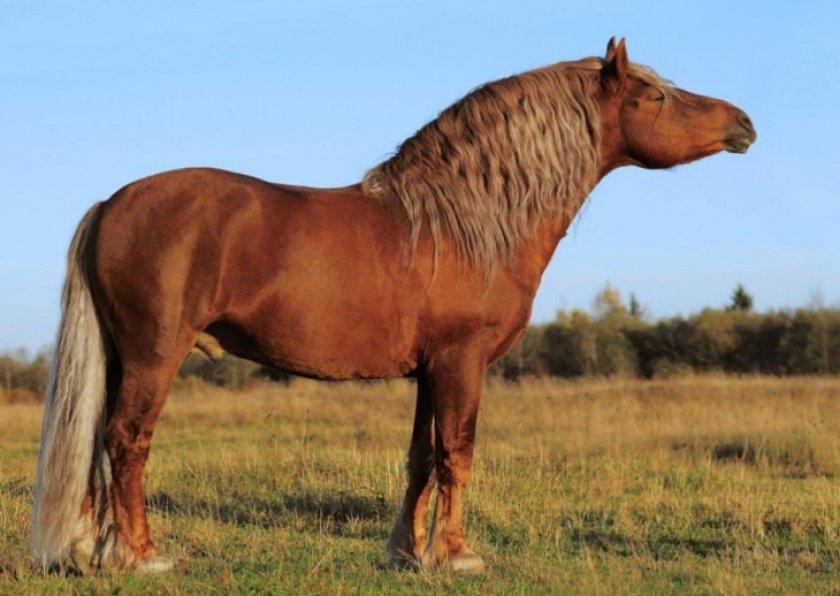
Breeding
Soviet heavy trucks reach their age and sex maturity at the age of 3 years. Healthy animals of calm behavior are allowed for breeding. In a pair for mating, the mare should be larger than the stallion. The average breeding period reaches 17 years. With good maintenance, mares and producers of this breed give offspring up to 20 years. The output of foals at stud farms is 65-67%.
The mating is carried out in natural and artificial ways. The best time is from March 15 to the end of July, so that the foal falls during the warm season, when there is enough grass.
There is a difference in the exterior between the horses of the Pochinkovsky and Mordovian stud farms, which is explained by genetic roots. Mordovian heavy trucks are smaller, more mobile and more temperamental due to crossing not only with Brabancons, but also with Suffolks. As a result of a long selection for certain economic purposes in different climatic conditions, 3 types of Soviet heavy trucks have developed:
- The horse is large, muscular, with a light head, wide croup, energetic.
- A horse of medium height, with a broad body, muscular chest, short legs, and a heavy head. The animal is not very demanding for food, it is resistant to prolonged physical exertion.
- The horse is very massive, disproportionate in build, with a heavy head, phlegmatic, demanding to feed and care.

The first two types are used to obtain a breeding herd. When crossed with low-pedigree horses in the first and second generation, they get offspring with good characteristics and working capacity. The third type is not suitable for breeding.
Diseases
Failure to comply with the rules of caring for heavy drafts leads to the development of diseases such as rheumatic inflammation of the hooves. The reason is drinking hot horses with cold water, cooling a sweaty animal under a stream of draft. In case of untimely or incorrect treatment, a hedgehog hoof forms, limiting the horse's performance.
An inadequate diet, dark, damp and unventilated stalls lead to the development of streptococcal infection: horse wash. Foals older than 6 months and horses up to 5 years old are most susceptible to washing. Infection is transmitted by air, through drinking, feeders.
If the hygienic rules of maintenance and care are not followed, horses may develop biting (a subspecies of eczema). Dirty hooves and litter are a source of infection that can affect any part of the animal's body. Washing too often dries out the skin and reduces immunity to bacterial contamination. Timely vaccination will protect animals from smallpox, anthrax, tuberculosis, tetanus, rabies.
